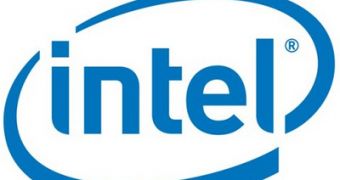Larrabee was supposed to be Intel's graphics solution capable of competing with NVIDIA's and AMD's GPUs. The chip was meant to answer the needs of supercomputers with GPU-based designs and would have been been capable of conventional graphics processing, ray tracing and general-purpose computing on graphics processing units (GPGPU). It was supposed to become an integral part of Intel CPUs by 2012-2013, but the chip's delay makes this seem quite unlikely. Intel may have to reconsider its roadmap if it hopes to continue to prosper even without high-end graphics solutions.
High-performance computing has already started exploring GPU-based supercomputing platform designs, some even making the Top500 list (such as the NVIDIA Tesla-powered TSUBAME back in 2008). This means that Intel has to somehow meet the demands of the GPU computing markets if it hopes to continue its growth in this area, but Larrabee's continued delays are already beginning to hamper the Santa Clara-based chip maker's ability to offer the advantages of GPGPU applications.
There seems to be a growing gap between Intel's graphics solutions (the graphics media accelerator) and the GeForce/Radeon graphics cards. The enterprise needs to improve its GMA (graphics media accelerator) and perhaps make its own GPUs if it hopes to provide support for DirectX 11 and capabilities for hardware-accelerated video transcoding on graphics cores.
Intel might have to reinvent its roadmap, perhaps make changes to its research and development plans in order to come up with a better solution for the graphics segment, both in the short and long terms. A solution to this situation would be to finish Larrabee by 2012 and immediately build it into 2013 CPUs.
Even though the company is still thriving, it cannot offer any kind of graphics solutions besides its low-end integrated graphics cores. It is possible that future GMA cores will integrate Larrabee elements and this would make sense, as the company will have to offer support for DirectX 11 graphics and applications in order to keep NVIDIA and AMD (ATI) in check.
The supposedly Larrabee-based Haswell processor, which Intel was reportedly working on, might use the Larrabee's wide SIMD vector processor unit in order to achieve faster data processing. This might occur despite the current plans to not include stream processors in Sandy or ivy-Bridge Xeon units. Regardless of its plans, however, Intel will definitely have to somehow address the demands of the market for standalone GPUs and HPC GPU-based accelerators.
Intel Corp. will launch the Clarkdale and Arrandale processors with integrated graphics circuits at the CES 2010. The graphics processing capabilities of these two chips will more clearly determine how well Intel will perform on the GPU market in absence of the Larrabee processor.

 14 DAY TRIAL //
14 DAY TRIAL //